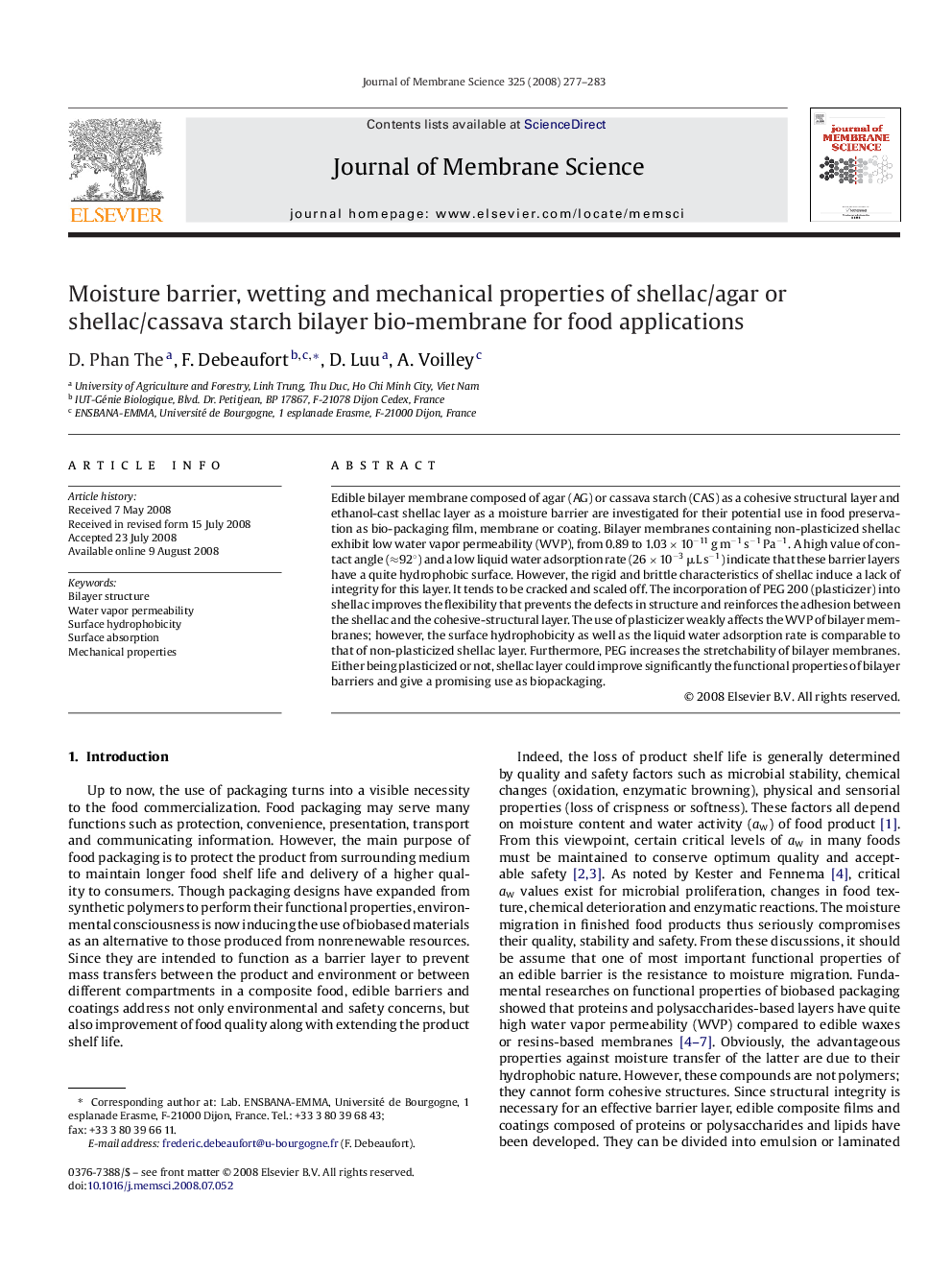| کد مقاله | کد نشریه | سال انتشار | مقاله انگلیسی | نسخه تمام متن |
|---|---|---|---|---|
| 637733 | 883692 | 2008 | 7 صفحه PDF | دانلود رایگان |

Edible bilayer membrane composed of agar (AG) or cassava starch (CAS) as a cohesive structural layer and ethanol-cast shellac layer as a moisture barrier are investigated for their potential use in food preservation as bio-packaging film, membrane or coating. Bilayer membranes containing non-plasticized shellac exhibit low water vapor permeability (WVP), from 0.89 to 1.03 × 10−11 g m−1 s−1 Pa−1. A high value of contact angle (≈92°) and a low liquid water adsorption rate (26 × 10−3 μL s−1) indicate that these barrier layers have a quite hydrophobic surface. However, the rigid and brittle characteristics of shellac induce a lack of integrity for this layer. It tends to be cracked and scaled off. The incorporation of PEG 200 (plasticizer) into shellac improves the flexibility that prevents the defects in structure and reinforces the adhesion between the shellac and the cohesive-structural layer. The use of plasticizer weakly affects the WVP of bilayer membranes; however, the surface hydrophobicity as well as the liquid water adsorption rate is comparable to that of non-plasticized shellac layer. Furthermore, PEG increases the stretchability of bilayer membranes. Either being plasticized or not, shellac layer could improve significantly the functional properties of bilayer barriers and give a promising use as biopackaging.
Journal: Journal of Membrane Science - Volume 325, Issue 1, 15 November 2008, Pages 277–283